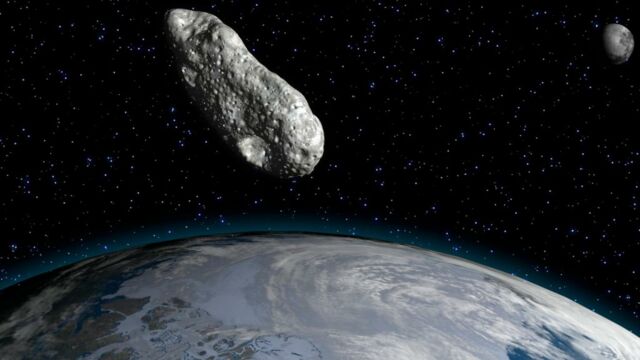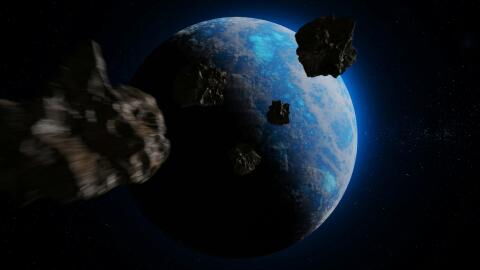Celestial objects pass near our planet regularly. Throughout the world, space agencies observe them and track down the most notable ones. By visiting the NASA website, we can discover that an asteroid several hundred meters large will pass by our planet very soon.
Discover our latest podcast
Every week, NASA updates its list of approaching asteroids, specifying the size and distance at which these celestial objects will approach us.
As a reminder, here's the difference between an asteroid, comet, meteoroid, and meteorite. Asteroids and comets both orbit the sun, but the former is a small, rocky, dusty, and metallic object while the latter contains ice.
A meteoroid is a rock or particle which also orbits the sun but is less than about 3 feet (1 metre) in size, while a meteor is a streak of light that appears in the sky when a meteoroid burns up upon entering Earth's atmosphere. And finally, a meteorite is a leftover piece of meteoroid or asteroid that makes it through the Earth's atmosphere and lands on its surface.
Asteroid 436774 (2012 KY3)
Among the five asteroids that will 'graze' us (we are talking about distances on a cosmic scale, therefore very relative) this week, one of them stands out: it is called 436774 (2012 KY3).
Its size? A whopping 671 metres, or about twice the size of Paris' Eiffel Tower.
According to NASA forecasts, the closest 436774 (2012 KY3) will approach Earth is 4,780,000km. And, it will be closest to us on Thursday 13 April.
Read more ⋙ Earth three times more likely to be hit by asteroids more powerful than nuclear bombs, NASA reveals
A mega-asteroid is set to come close to Earth in a near approach as satellites gaze at it's close arrival. Asteroid 436774 (2012 KY3) or 2012 KY3 will rendezvous with Earth on April 13 passing at a distance of 47,84,139 kilometers from the planet on its way around the Sun. pic.twitter.com/9OZyzsZTTf
— Fortune Post Media (@fortune_post) April 12, 2023
Read more:
⋙ 'Potentially hazardous' asteroid the size of a cruise ship will come closest to Earth yet in 2023
Asteroid not expected to collide with Earth
It's closeness to Earth gives this asteroid the designation of a Near-Earth Object (NEO) and Potentially Hazardous Asteroid (PHA).
An NEO is typically defined as an asteroid or comet with orbits that bring them to within 120 million miles (195 million kilometres) of the Sun. While a PHA is an asteroid that approaches our planet at less than half the Earth-Sun distance.
According to NASA, most NEOs don't pose any risk. It’s the small percentage of PHAs that experts are wary of.
But when will this mastodon collide with us and generate colossal damage? We reassure you right away, the risk of collision is extremely low.
NASA recently announced that its asteroid defence system was ready, after testing it during the DART mission. During this mission, the Agency crashed a spacecraft against an asteroid in order to divert its trajectory. Of course, for this technique to work, the threatening asteroid must be spotted well in advance.
This article has been adapted from Gentside FR.
Sources used:
NASA: 'Asteroid Watch'
NASA: 'Next Five Asteroid Approaches'
NASA: 'Keeping an Eye on Space Rocks'















